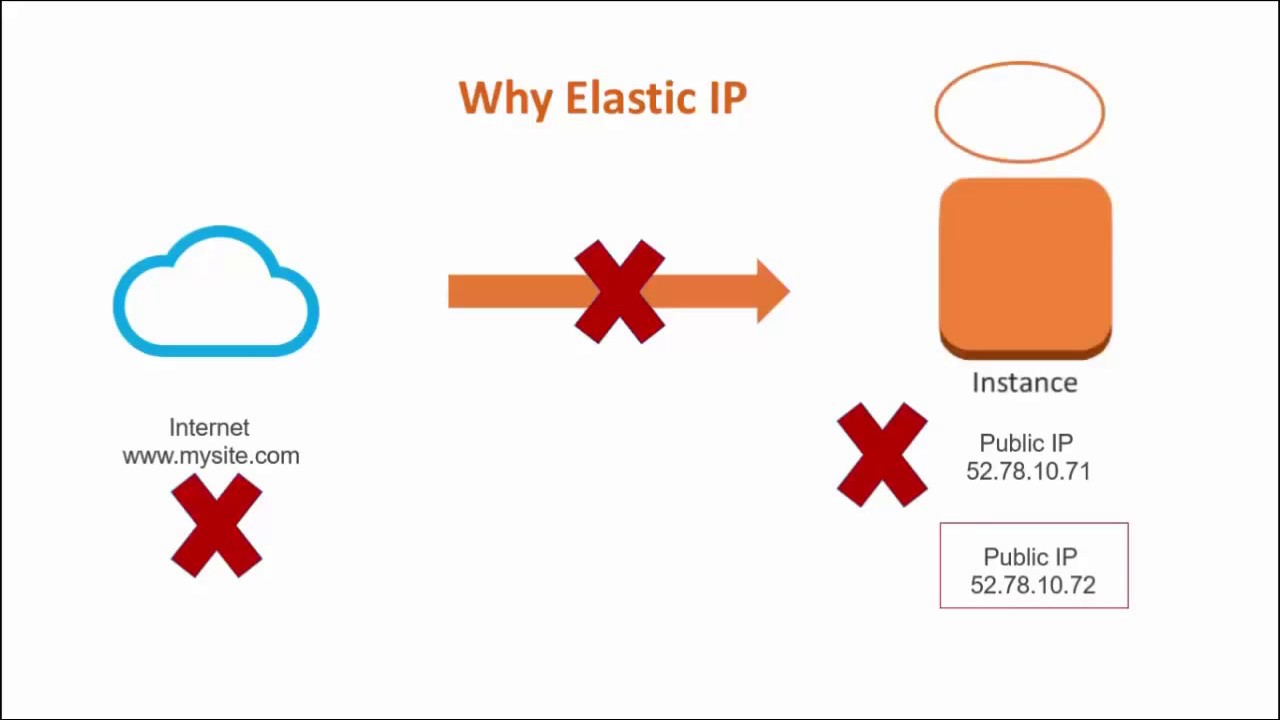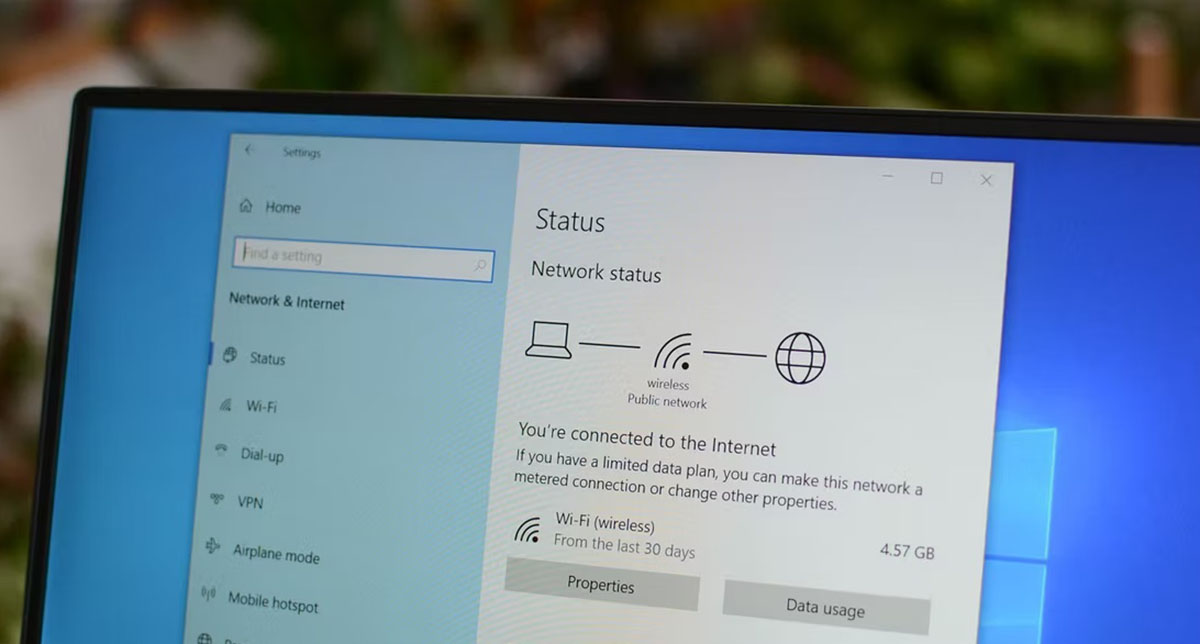What is an IP Address?
An IP address, short for Internet Protocol address, is a unique identifier assigned to every device connected to a computer network. It serves as a numerical label that allows devices to communicate with each other over the internet.
Think of an IP address as a phone number for your device. Just as you need a phone number to make a call, your device needs an IP address to send and receive data over the internet.
An IP address consists of a series of numbers separated by periods (e.g., 192.168.0.1). Each section of the IP address represents a different level of the network hierarchy, allowing routers to efficiently route data packets to their destinations.
IP addresses can be either IPv4 (Internet Protocol version 4) or IPv6 (Internet Protocol version 6). IPv4 addresses are written in the 32-bit decimal format (e.g., 192.168.0.1), while IPv6 addresses are written in the 128-bit hexadecimal format (e.g., 2001:0db8:85a3:0000:0000:8a2e:0370:7334).
The importance of IP addresses cannot be understated. They enable devices to establish connections, access websites, send and receive emails, stream media, and engage in countless other online activities.
It is worth noting that IP addresses can be dynamic or static. Dynamic IP addresses are assigned by the internet service provider (ISP) temporarily and can change over time, whereas static IP addresses remain constant, making them more suitable for activities such as hosting websites or remote access.
Now that we have established what an IP address is, let’s delve into how it works.
How does an IP Address work?
At its core, an IP address enables devices to communicate with each other over the internet by assigning a unique identifier to each device. When you send a request to access a website or any online resource, your device uses its IP address to locate and establish a connection with the target device.
When you enter a website’s URL in your browser, your device sends a request to a domain name system (DNS) server to convert the URL into an IP address. Once the IP address is obtained, your device sends packets of data containing the request to the device with the corresponding IP address.
The data packets containing your request travel through a series of routers, each responsible for forwarding the packets to the next router until they reach their destination. The routers use the IP addresses to determine the most efficient path for the data packets to follow.
Upon reaching the destination device, the data packets are reassembled, and the requested information is sent back to your device in a similar manner. The IP address of your device allows the response to be routed back accurately, ensuring that the data reaches the intended recipient.
It is important to note that IP addresses work in conjunction with other networking protocols, such as TCP (Transmission Control Protocol) and UDP (User Datagram Protocol), which add additional functionality and reliability to the data transmission process.
To summarize, IP addresses enable devices to communicate with each other over the internet by assigning a unique identifier to each device. They play a crucial role in routing data packets accurately and efficiently to their destinations, allowing for seamless online communication and access to various resources.
Types of IP Addresses
There are different types of IP addresses that serve specific purposes in computer networks. Understanding these types can help you better understand how devices are identified and connected on the internet.
1. Public IP Addresses: Public IP addresses are assigned to devices directly connected to the internet. They are unique and globally recognizable, allowing devices to communicate with each other across different networks. Public IP addresses are typically assigned by your internet service provider (ISP) and are visible to other devices on the internet.
2. Private IP Addresses: Private IP addresses are used within private networks, such as local area networks (LANs) or home networks. They are not directly visible on the internet and are used for internal communication between devices within the same network. Private IP addresses provide a layer of security by keeping internal network devices hidden from the outside world.
3. IPv4 Addresses: IPv4 (Internet Protocol version 4) addresses are the most widely used type of IP addresses. They consist of a 32-bit address expressed in four sets of numbers separated by periods. However, the limited number of available IPv4 addresses has led to the adoption of IPv6.
4. IPv6 Addresses: IPv6 (Internet Protocol version 6) addresses were introduced to address the exhaustion of IPv4 addresses. They consist of a 128-bit address expressed in eight groups of four hexadecimal digits separated by colons. IPv6 addresses provide a significantly larger address space, allowing for an almost endless number of unique addresses.
5. Reserved IP Addresses: Certain IP address ranges are reserved for specific purposes. For example, the IPv4 address range 192.168.0.0 to 192.168.255.255 is reserved for private networks. Similarly, ranges such as 127.x.x.x and 169.254.x.x have specific uses.
By understanding the different types of IP addresses, you can better manage and configure your network devices, ensure proper connectivity, and maintain a higher level of security.
Static IP vs Dynamic IP
When it comes to IP addresses, there are two primary types: static IP addresses and dynamic IP addresses. Each has its own advantages and use cases depending on the specific requirements.
1. Static IP Addresses:
A static IP address is a fixed address that is permanently assigned to a device. It does not change over time and remains constant, even if the device is restarted or disconnected from the network. Static IP addresses are often used for devices that require consistent and uninterrupted connectivity, such as servers, routers, or devices hosting websites or services. With a static IP address, these devices can be easily accessed by other devices over the internet.
Some benefits of using a static IP address include:
- Reliability: With a fixed IP address, devices can always be reached using the same address, making it easier for remote access or hosting services.
- Accessibility: Static IP addresses are ideal for devices that need to be accessed remotely, as they provide a fixed point of contact.
- Network Configuration: Static IP addresses simplify network configuration since the address does not change.
2. Dynamic IP Addresses:
A dynamic IP address is an address that is assigned to a device temporarily by the internet service provider (ISP). It changes each time the device connects to the network or after a certain period of time. Dynamic IP addresses are commonly used for personal computers, laptops, smartphones, and other devices that do not require constant accessibility from external sources.
Benefits of using a dynamic IP address include:
- Cost-Effectiveness: Dynamic IP addresses are typically provided by ISPs as they are more cost-effective compared to static IP addresses.
- Address Availability: Dynamic IP addresses allow better utilization of the available pool of IP addresses since they are only assigned when needed.
- Privacy: With a dynamic IP address, your device is less exposed to potential hackers or attackers since the IP address changes regularly.
Choosing between a static IP address and a dynamic IP address depends on your specific needs. If you require constant accessibility or hosting services, a static IP address is recommended. However, for most personal device users, a dynamic IP address is generally sufficient and more cost-effective.
Public IP vs Private IP
Public IP addresses and private IP addresses play different roles in the networking ecosystem. Understanding the distinction between them is crucial for managing and securing computer networks.
1. Public IP Addresses:
A public IP address is a globally unique identifier assigned to a device connected directly to the internet. It allows the device to communicate with other devices on different networks. Public IP addresses are allocated by Internet Assigned Numbers Authority (IANA) and distributed by internet service providers (ISPs) to their customers.
Key points about public IP addresses:
- Uniqueness: Public IP addresses are unique on a global scale, enabling devices to connect and communicate across the internet.
- Visibility: Public IP addresses are visible to other devices on the internet, allowing them to initiate connections with the device.
- Accessible: Devices with public IP addresses can be accessed from anywhere on the internet, which is crucial for hosting websites, running servers, or enabling remote access.
2. Private IP Addresses:
Private IP addresses are used within private networks, such as local area networks (LANs) or home networks. They are not publicly routable on the internet and are intended for internal use only. Private IP addresses can be assigned by network administrators and are not unique on a global scale.
Key points about private IP addresses:
- Non-Routable: Private IP addresses are not directly routable on the internet, meaning devices with private IP addresses cannot be accessed directly from the internet.
- Internal Communication: Private IP addresses are used for internal communication between devices within the same network.
- Security: Using private IP addresses adds an extra layer of security, as devices within a private network are not directly visible to the outside world.
Network Address Translation (NAT) is commonly used to translate private IP addresses into a public IP address when accessing the internet. This allows devices within a private network to access online resources while maintaining the security provided by private IP addresses.
By understanding the distinction between public IP addresses and private IP addresses, network administrators can effectively manage and secure their networks, ensuring efficient connectivity and protecting internal devices from external threats.
IPv4 vs IPv6
IPv4 (Internet Protocol version 4) and IPv6 (Internet Protocol version 6) are the two main versions of the Internet Protocol used to assign IP addresses and enable communication between devices on the internet. Although IPv4 has been the dominant protocol for many years, the increasing demand for IP addresses has led to the adoption of IPv6.
1. IPv4:
IPv4 is a 32-bit address system, expressed in a four-part decimal format (e.g., 192.168.0.1). It provides approximately 4.3 billion unique IP addresses, which seemed like an enormous number when IPv4 was initially developed. However, with the rapid expansion of the internet and the increasing number of connected devices, the available IPv4 addresses have become limited.
Key points about IPv4:
- Limited Address Space: The 32-bit address space of IPv4 allows for approximately 4.3 billion unique addresses.
- NAT Usage: The shortage of IPv4 addresses has led to the widespread use of Network Address Translation (NAT), which allows multiple devices to share a single public IP address.
- Global Compatibility: IPv4 is supported by virtually every device and networking infrastructure, ensuring compatibility across the internet.
2. IPv6:
IPv6 is a newer version of the Internet Protocol designed to address the limitations of IPv4. It uses a 128-bit address system expressed in eight groups of four hexadecimal digits (e.g., 2001:0db8:85a3:0000:0000:8a2e:0370:7334). The use of a larger address space allows for an almost infinite number of unique IP addresses.
Key points about IPv6:
- Expanded Address Space: The 128-bit address space of IPv6 provides approximately 340 undecillion unique addresses, ensuring an abundant supply of IP addresses for future growth.
- Simplified Addressing: IPv6 includes simplified addressing and more efficient packet routing, improving the overall performance of internet connections.
- Integration Challenges: IPv6 adoption has been slower than anticipated due to the need for infrastructure upgrades and potential compatibility issues with older systems designed for IPv4.
While IPv6 offers significant advantages in terms of address space and efficiency, the transition from IPv4 to IPv6 is still ongoing. Both protocols will coexist for the foreseeable future, and network administrators must ensure compatibility and support for both versions in their networks.
How to Find Your IP Address
If you want to know your device’s IP address, there are several methods you can use depending on the operating system and device you are using. Here are a few common ways to find your IP address:
1. Using the Command Prompt or Terminal:
– For Windows:
– Open the Command Prompt by pressing Win + R and then typing “cmd” followed by Enter.
– In the Command Prompt window, type “ipconfig” and press Enter.
– Look for the “IPv4 Address” under the network adapter you are using to find your IP address.
– For macOS and Linux:
– Open the Terminal application.
– Type “ifconfig” or “ip addr” and press Enter.
– Locate the network adapter you are using and find the corresponding “inet” or “inet6” address, which represents your IP address.
2. Checking Network Settings:
– For Windows:
– Open the Settings app.
– Go to “Network & Internet” and select “Wi-Fi” or “Ethernet” depending on your connection type.
– Click on “Properties” and scroll down to find the “IPv4 Address” or “IPv6 Address” under the network adapter you are using.
– For macOS:
– Open the Apple menu and select “System Preferences”.
– Choose “Network” and select the network connection you are using.
– Your IP address will be displayed alongside the connection status.
3. Using Online IP Address Lookup Tools:
– Alternatively, you can use any online IP address lookup tool by simply searching for “What is my IP address” in a search engine. The search results will typically display your public IP address.
It is important to note that you may have both a public and private IP address. The methods mentioned above will usually display your private IP address, which is assigned to your device within the local network. If you want to find your public IP address, you can use an online IP address lookup tool or check your router’s settings.
By using these methods, you can easily find your IP address and gain important information about your network connections.
Can I Change My IP Address?
Yes, it is possible to change your IP address, but whether you can do so easily and how you achieve it depends on whether you have a static or dynamic IP address:
1. Dynamic IP Address:
If you have a dynamic IP address, which is assigned by your internet service provider (ISP) and can change over time, your IP address will typically change automatically. This can occur when you disconnect and reconnect to your network or when your ISP assigns a new IP address during routine network maintenance.
In most cases, simply restarting your router or modem can trigger a change in your IP address. However, keep in mind that the change may not be permanent, as your ISP may eventually assign you the same IP address or one from the same pool of dynamic addresses.
2. Static IP Address:
If you have a static IP address, which is a fixed address assigned by your ISP, changing it requires contacting your ISP and requesting an IP address change. Static IP addresses are often used for specific purposes, such as hosting websites or remote access, so changing them is typically more complicated and may involve additional fees.
Alternatively, you can use a virtual private network (VPN) or a proxy server to change the IP address seen by external devices. These services route your internet traffic through their servers, effectively assigning you a different IP address. However, keep in mind that while your visible IP address may change, your actual IP address assigned by your ISP remains the same.
It’s important to note that changing your IP address may have implications for services that rely on your IP address for authentication or security purposes. For instance, some online services may detect changes in your IP address and require additional verification steps to prevent unauthorized access.
It is also worth mentioning that when it comes to privacy and security, changing your IP address alone may not be sufficient. Other measures, such as using strong passwords, keeping your devices and software updated, and being cautious about online activities, play important roles in protecting your online identity and data.
In summary, changing your IP address is possible, but the ease and method of changing it depend on whether you have a dynamic or static IP address. If you are unsure or need assistance, it is recommended to contact your ISP for guidance.
Why is IP Address Important?
The IP address is a fundamental component of the internet infrastructure and plays a crucial role in enabling communication and connectivity between devices. Here are some key reasons why IP addresses are important:
1. Device Identification and Communication:
An IP address serves as a unique identifier for devices connected to a network. It allows devices to identify and communicate with each other over the internet. Whether you are sending an email, browsing a website, or streaming media, your devices rely on IP addresses to establish connections and transfer data.
2. Routing Data Packets:
IP addresses play a vital role in routing data packets from the source device to the destination device across the internet. Routers use IP addresses to determine the most efficient paths for data transmission, ensuring that packets reach their intended recipients.
3. Internet Accessibility:
IP addresses are essential for accessing websites, online services, and other resources on the internet. When you enter a website’s domain name in your browser, the DNS server converts it into an IP address to establish a connection between your device and the website’s server.
4. Network Management and Troubleshooting:
IP addresses are valuable for network administrators in managing and troubleshooting network issues. By monitoring IP addresses, administrators can identify devices on the network, track network traffic, and diagnose connectivity problems.
5. Security and Access Control:
IP addresses are utilized for security measures and access control. Firewalls and other security systems can filter and block traffic based on IP addresses to prevent unauthorized access or malicious activities. IP addresses are also used for geolocation-based access restrictions, allowing websites and services to provide region-specific content or enforce country-specific regulations.
6. IP Address Tracking:
IP addresses have the ability to be tracked, which can aid in law enforcement investigations, identifying unauthorized network access, or monitoring user behavior. However, it is important to note that privacy concerns arise from the potential misuse or abuse of IP address tracking.
Overall, IP addresses are a fundamental aspect of the internet, enabling communication, connectivity, and accessibility. They are vital for identifying devices, routing data, managing networks, enforcing security measures, and facilitating various online activities.
IP Address and Online Security
IP addresses play a significant role in online security, both for individuals and organizations. Understanding the connection between IP addresses and security is crucial in safeguarding sensitive information and protecting against potential threats.
1. Tracking and Monitoring:
IP addresses can be used to track and monitor online activities. Website administrators, internet service providers (ISPs), and law enforcement agencies can trace IP addresses to identify potential threats, investigate cybercrimes, or monitor unauthorized access. This tracking capability can serve as a deterrent for potential attackers.
2. Access Control and Firewalls:
Firewalls and security systems use IP addresses to control access to networks and resources. By filtering traffic based on IP addresses, organizations can allow or block specific addresses, restricting access to sensitive data and preventing malicious activities. It enables network administrators to implement access control lists (ACLs) and create security rules to provide a more secure environment.
3. Geolocation-Based Security:
IP addresses can provide valuable geolocation information, which allows websites and online services to establish access restrictions based on geographical locations. This geolocation-based security can help enforce copyright and licensing agreements, comply with regional regulations, and protect against unauthorized access from specific countries or regions.
4. Proxy Servers and Anonymity:
Proxy servers or virtual private networks (VPNs) can change or mask IP addresses, providing an additional layer of anonymity and security. By routing internet traffic through different IP addresses, individuals can ensure their online activities are not easily traceable, protecting their privacy and reducing the risk of targeted attacks.
5. Preventing DDoS Attacks:
IP addresses are often targeted in Distributed Denial of Service (DDoS) attacks. Attackers flood a target’s IP address with a massive volume of traffic, overwhelming the network and causing it to become inaccessible. Proper security measures, such as traffic filtering and IP reputation systems, can help detect and mitigate DDoS attacks by blocking malicious IP addresses.
While IP addresses play a role in online security, it’s essential to keep in mind that they are not the only factor. Implementing strong passwords, regularly updating software, using encryption protocols, and staying vigilant against phishing attacks are equally important in maintaining online security.
Overall, IP addresses are a crucial component in enhancing online security. Understanding their role and implementing appropriate security measures helps protect networks, data, and individuals from potential threats and unauthorized access.
IP Address and Geolocation
IP addresses provide valuable geolocation information, allowing websites and online services to determine the approximate geographical location of devices connected to the internet. This geolocation feature has various practical applications and serves different purposes:
1. Targeted Advertising and Content Localization:
Geolocation data obtained from IP addresses enables online platforms to tailor advertisements and content based on the user’s location. By understanding the user’s geographical context, websites and advertisers can deliver more relevant and localized content, improving the overall user experience.
2. Regional Restrictions and Licensing Compliance:
IP geolocation allows businesses to enforce regional restrictions and ensure compliance with licensing agreements. Streaming services, for example, may restrict access to certain shows or movies based on the user’s location to comply with content distribution rights and licensing regulations in specific regions.
3. Fraud Detection and Prevention:
IP geolocation data is invaluable in identifying suspicious activities and preventing fraudulent transactions. By comparing the user’s claimed location with the geolocation data provided by the IP address, online merchants and financial institutions can better detect potential fraud attempts and take appropriate action.
4. Delivery Optimization:
E-commerce companies and logistics providers utilize IP geolocation to optimize the delivery process. Geolocation data allows them to identify the optimal locations for warehouses, distribution centers, and delivery routes, resulting in faster and more efficient shipping and logistics operations.
5. Multi-factor Authentication and Access Control:
Geolocation data can be used as an additional factor in multi-factor authentication systems, providing an extra layer of security. By comparing the user’s current location with their typical location, authentication systems can detect potential unauthorized access attempts and trigger additional verification steps if necessary.
It is essential to note that while geolocation based on IP addresses can provide an estimate of a device’s location, it may not always be completely accurate or precise. Factors such as the use of VPNs, proxy servers, or network configurations can affect the accuracy of geolocation information obtained from IP addresses.
Privacy concerns related to IP geolocation should also be considered. Users may have legitimate reasons to opt-out or control the sharing of their geolocation data. It is crucial for organizations and service providers to handle such sensitive data responsibly and in compliance with relevant privacy regulations.
Overall, IP geolocation offers valuable insights for businesses and improves the personalization and efficiency of online experiences. However, it is important to strike a balance between utilizing geolocation data for legitimate purposes and respecting user privacy rights.
Conclusion
Throughout this article, we have explored the significance and various aspects of IP addresses. These unique identifiers play a crucial role in enabling communication, connectivity, and security on the internet. Understanding IP addresses empowers individuals and organizations to manage their networks effectively and ensure secure online experiences.
We discussed the definition of an IP address and how it works, highlighting its role in facilitating communication between devices over the internet. By assigning a unique numerical label to each device, IP addresses allow for seamless data transmission and routing.
We explored different types of IP addresses, such as public and private IP addresses. Public IP addresses enable devices to connect globally, while private IP addresses are used within local networks for internal communication. Additionally, we examined the transition from IPv4 to IPv6, which provides a larger address space to accommodate the growing number of connected devices.
Finding and changing IP addresses were also covered in this article. We discussed various methods to find your IP address, whether it is dynamic or static. Additionally, we explored the possibilities of changing IP addresses, considering factors such as whether the address is provided by your ISP or if it can be masked using proxy servers or VPNs.
The importance of IP addresses in online security and geolocation was addressed. IP addresses are used to track and monitor activities, enforce access control, and detect potential threats. Geolocation data derived from IP addresses enables targeted advertising, content localization, and fraud prevention.
In conclusion, IP addresses are essential elements of the internet infrastructure, serving as unique identifiers that enable communication, facilitate connectivity, enforce security measures, and provide valuable geolocation information. By understanding IP addresses and their implications, individuals and organizations can optimize network management, enhance online security, and deliver personalized online experiences.

























